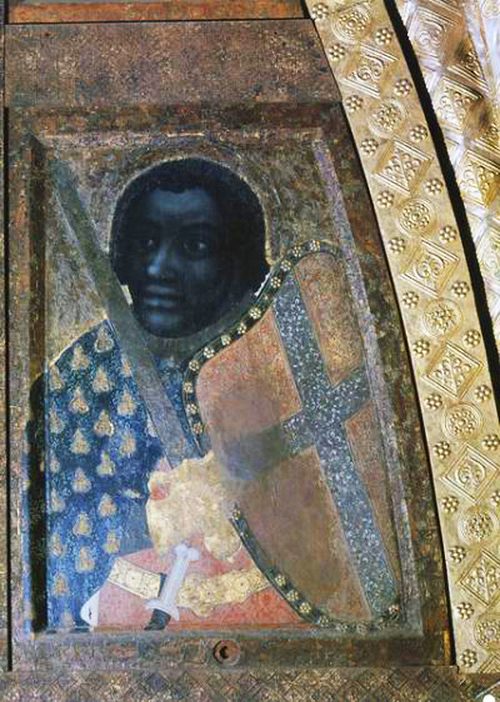The Black St. Maurice was initially a feature of local veneration specific to an area that roughly corresponds to the state of Sachsen-Anhalt in north-central Germany. While the Hohenstaufen emperors were important in establishing this tradition in the thirteenth century, the archbishops of Magdeburg were responsible for maintaining it in this region thereafter. We can see the importance of powerful individuals for promoting this vision of the saint in this painted panel from the castle of Karlštejn, outside of Prague. The Emperor Charles IV sought to burnish his own prestige by having a grand chapel built and using it to display his imperial insignia as well as images and relics of the most important saints for the empire. Charles apparently saw great value in St. Maurice. Not only did he commission a portrait to be included among the other saints in his chapel. Charles also instituted an annual feast in Maurice’s honor and acquired his lance and sword and one of his arms. As Jean Devisse notes, Charles was successful in transporting the cult of the Black saint to Bohemia as a lasting symbol of authority, but the cult did not become popular below the level of the elites.
This image was painted by an artist named Theodoric or one of his workers. Like the Magdeburg statue, this saint is not caricatured but rather sensitively portrayed.
Jeff Bowersox
deutsch
Source: Theodoric, St. Maurice (before 1367), Karlštejn Castle, Chapel of the Holy Cross.

St. Maurice in Bohemia (before 1367) by Jeff Bowersox is licensed under a Creative Commons Attribution-ShareAlike 4.0 International License. Permissions beyond the scope of this license may be available at https://blackcentraleurope.com/who-we-are/.
